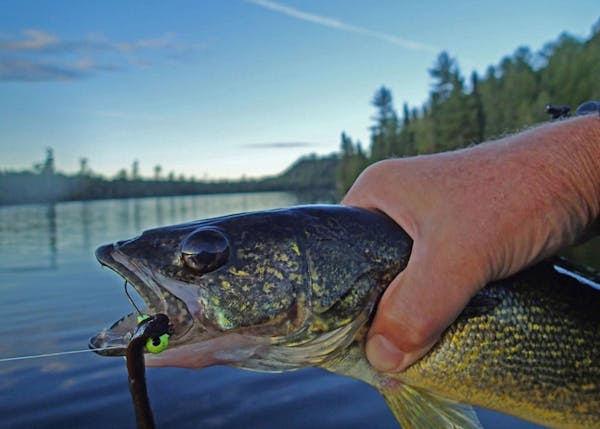A panel of Mille Lacs stakeholders urged the Department of Natural Resources Wednesday to allow a one-fish bag limit for early-season walleye anglers — a practice that was previously dropped over fears it would set the stage for a year of overharvest.
State Fisheries Chief Brad Parsons said the agency will consider the option as it mulls what regulation will best utilize the state's 2021 allocation of 87,500 pounds of walleye. He said the decision will rest with the DNR after officials give more thought to various scenarios that include a mix of catch-and-release periods, a possible closure of walleye fishing in July and bag limits in the fall for walleyes as small as 16 inches.
Of the 15 scenarios presented to the Mille Lacs Fisheries Advisory Committee, a number of panelists spoke in favor of an option that would allow anglers to keep one 21-to-23-inch walleye on days in May, starting with the statewide opener. For the remainder of the year, walleye fishing would be limited to catch and release with a two-week closure July 1-15.
The option for allowing anglers to keep some larger-sized walleyes in May was predicted by computer modeling to keep the state within the boundaries of its 2021 allocation, with only a small-percentage chance of going over.
Parsons said this year's poundage — set under a co-management system with eight Chippewa bands — is identical in size to last year. At Wednesday's virtual meeting, he was reminded repeatedly that Mille Lacs finished last year's season 20,000 pounds under quota — a measure that can't be carried forward under the rules.
Panelists pushed him to consider a new method that would allow the DNR to create late-season bag limits when trends show that the state could harvest more fish.
Parsons said above all, DNR wants to avoid unplanned walleye fishing closures on Mille Lacs when the harvest is trending toward a sizable overage.
Panelists also wondered out loud during the meeting why state anglers have been limited to taking large walleyes when bag limits are created. A couple of the scenarios set forth by the DNR on Wednesday showed it was possible for anglers to keep walleyes as small as 16 inches if the limited harvest was moved to the fall and walleye fishing was closed in July.
